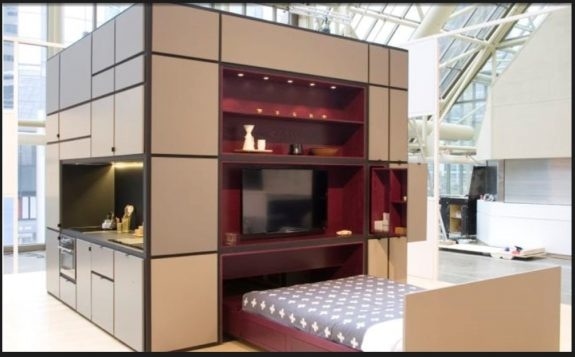
Presented over the weekend at Toronto’s Interior Design Show, Cubitat is a 10-by-10-by-10-foot cube that houses a kitchen, bathroom, bed, laundry, and storage.
Once plumbing and electric are hooked up, the structure can theoretically turn any dwelling into what the developers are calling a “plug and play” living space that looks something like a giant’s Rubik’s cube and seems to beg to be painted in Mondrian colors.
A collaboration between Toronto-based Urban Capital developers David Wex and Mark Reeve (the team behind Smart House microcondos) and designer Luca Nichetto, the prefab cube, which is still in the prototype phase, can be customized online and shipped to its destination.
“Cubitat is about a more intelligent, holistic way to design and construct our living environments, taking cues from the prefab world and modern production methods,” Wex explained, “As a builder, we look at the automotive, consumer product, and tech industries and ask why we can’t operate with that much rapidity and flexibility.”
The concept is appealing, but problematic. For the moment, Cubitat comes assembled in one giant piece. So although it looked great in the large, light-filled exhibition space at the Toronto show, figuring out how to get this giant module through the doors of most existing structures is an obvious obstacle (unless you’re lowering it into a roofless barn or sliding it into a converted double garage).
Despite the Cubitat’s size problem, the designers envisioned the cube as a theoretically mobile object, based on the concept of a transformable home. Some of the ideas suggested by the builders are: (1) hoist and slide Cubitat onto a condo floor mid-construction, (2) build a platform for Cubitat in the cottage country of your dreams, or (3) ship Cubitat from the city to the country so you can retire in your own home. Obviously, Cubitat is not a stand-alone structure. It must be situated inside another larger structure. Only time will tell what additional innovative uses will be created for this different type of shelter. ##
(Photo Credit: Cubitat)
Article Submitted by Sandra Lane to – Daily Business News- MHProNews.

